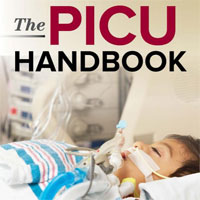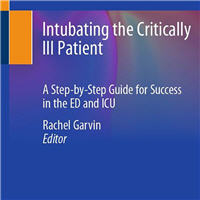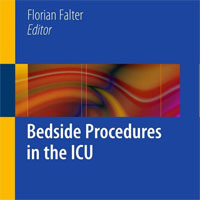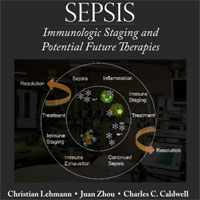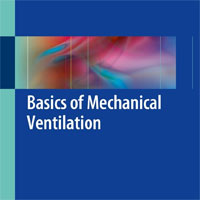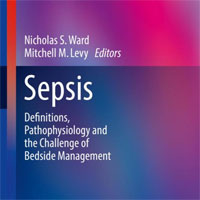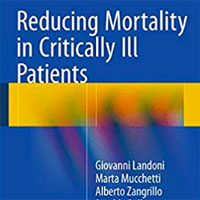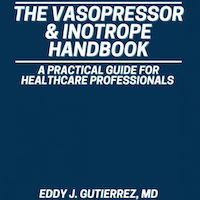Tag: thrombosis
Effect of Intermediate-Dose vs. Standard-Dose Prophylactic Anticoagulation on Thrombotic Events, ECMO Treatment, or Mortality Among Patients With COVID-19 in ICU
Among patients admitted to the ICU with COVID-19, intermediate-dose prophylactic anticoagulation, compared with standard-dose prophylactic anticoagulation, did not result in a significant difference in the primary outcome... read more
Early Hemostatic Management of Disseminated Intravascular Coagulopathy
Inflammation and coagulation pathobiology play a significant role in the development of multiorgan failure occurring with sepsis. Inflammation induced by an infection can lead to endothelial injury, which subsequently... read more
Contrast-enhanced Ultrasound (CEUS) of the Lung Reveals Multiple Areas of Microthrombi in a COVID-19 Patient
Peng et al. have outlined several characteristics common to all COVID-19 patients using lung ultrasound and the 12 zone method. Zotzmann et al. in a follow-up letter raised the question on whether these areas of subpleural... read more
Neutrophilic Inflammation, Immunothrombosis May Distinguish Severe COVID-19 From Influenza
Severe coronavirus disease 2019 (COVID-19) is associated with immunothrombotic, neutrophil-containing vessel occlusions in the lung, with neutrophils representing the primary immune cell component associated with clinical... read more
Oral Vitamin K Lowers the International Normalized Ratio More Rapidly
Oral vitamin K lowers INR more rapidly than subcutaneous vitamin K in asymptomatic patients who have supratherapeutic INR values while receiving warfarin. Warfarin therapy was withheld, and 1 mg of vitamin K was given... read more
VTE and COVID-19: Would you like to know more?
Who wouldn't want to know more about a disease that has killed >1 million people to date, worldwide. Who wouldn't want to know more about the thromboembolic risk associated with COVID-19 when we have been told that the VTE... read more
Thrombosis and Bleeding in ECMO without Anticoagulation
Extracorporeal membrane oxygenation (ECMO) causes both thrombosis and bleeding. Major society guidelines recommend continuous, systemic anticoagulation to prevent thrombosis of the ECMO circuit, though this may be undesirable... read more
Endothelial Dysfunction Role During COVID-19
Emerging data suggest a crucial role of endothelial dysfunction during SARS-CoV-2 infection, as a direct target of the virus and inflammatory cytokines as well as the main actor in orchestrating a pro-inflammatory and pro-coagulant... read more
Thrombotic and Hemorrhagic Complications in Critically Ill Patients with COVID-19
Critically ill patients with COVID-19 experience high rates of venous and arterial thrombotic complications. The rates of bleeding may be higher than previously reported and re-iterate the need for randomised trials to better... read more
Right Heart Thrombus in Transit Diagnosed With Focused Cardiac Ultrasound
Pulmonary embolism (PE) is a potentially fatal entity that is frequently diagnosed in the emergency department (ED). Emergency physicians (EPs) routinely perform focused cardiac ultrasound (FOCUS) to support a prompt ED diagnosis... read more
Ground-breaking Research – Venous Thrombosis is Back in Business
The primary efficacy outcome was the development of a major venous thromboembolic event such as symptomatic distal or proximal deep-vein thrombosis, asymptomatic deep vein thrombosis, pulmonary embolism or venous thromboembolism–related... read more
High Risk of Thrombosis in Patients With Severe SARS-CoV-2 Infection
Despite anticoagulation, a high number of patients with ARDS secondary to COVID-19 developed life-threatening thrombotic complications. Higher anticoagulation targets than in usual critically ill patients should therefore... read more
COVID-19: 10 Things I Wished I’d Known Some Months Ago
The COVID-19 pandemic is ongoing and spreading, affecting individuals in over 200 countries now. While COVID-19-related articles are being published every day, including guidelines of optimal clinical management, there are... read more
Spontaneous Echo Contrast in Venous Ultrasound of Severe COVID-19 Patients
Initial reports have indicated a higher incidence of venous thromboembolism (VTE) among patients with coronavirus disease 2019 (COVID-19) compared to other critical illnesses. Helms et al. found pulmonary embolisms in 25%... read more
High Risk of Thrombosis in Patients with Severe COVID-19
Despite anticoagulation, a high number of patients with ARDS secondary to COVID-19 developed life-threatening thrombotic complications. Higher anticoagulation targets than in usual critically ill patients should therefore... read more
COVID-19: Thrombosis and Anticoagulation
Early reports have shown that COVID-19 is most likely causing a hypercoagulable state, however the prevalence of acute VTE and exactly how to treat it is an evolving area. Limited data suggest pulmonary microvascular thrombosis... read more
Multi-Modal Characterization of the Coagulopathy Associated With ECMO
The extracorporeal membrane oxygenation(ECMO)-associated coagulopathy is a multifactorial and quickly developing syndrome. It is characterized by individual changes of coagulation parameters and platelets and is aggravated... read more
1-Year Outcomes in Patients with Infection-related Atrial Fibrillation
During the first year after discharge, 36% of patients with infection-related atrial fibrillation (AF) had a new hospital contact with AF. Infection-related AF was associated with increased risk of thromboembolic events... read more
Pericardiocentesis During Cardiopulmonary Resuscitation
In this video, Dr. Traci Wolbrink reviews the procedural steps to performing Pericardiocentesis as well as reviewing indications, contraindications and risk factors for patients experiencing pericardial effusion. ... read more
Thrombosis and Bleeding in the ICU
ICU patients are high risk of developing thrombotic complications such as deep venous thrombosis (DVT) and pulmonary embolism (PE). Indeed, due to the hypercoagulative state typical for many forms of critical illness associated... read more
EHR-guided Strategy Reduces Postop VTE Events
By incorporating algorithms into the electronic health record (EHR), UPMC was able to realize a "dramatic" 72% reduction in missed doses, from 4,331 missed doses in 2014 to 1,193 in 2015, Dr. Neal told attendees in a session... read more
Subsegmental Pulmonary Embolism: Anticoagulation or Observation?
As the use of chest CT-angiograms in emergency departments and medical wards has risen by more than tenfold, so has the discovery of small pulmonary emboli of unclear clinical significance. These PEs are often isolated to... read more


